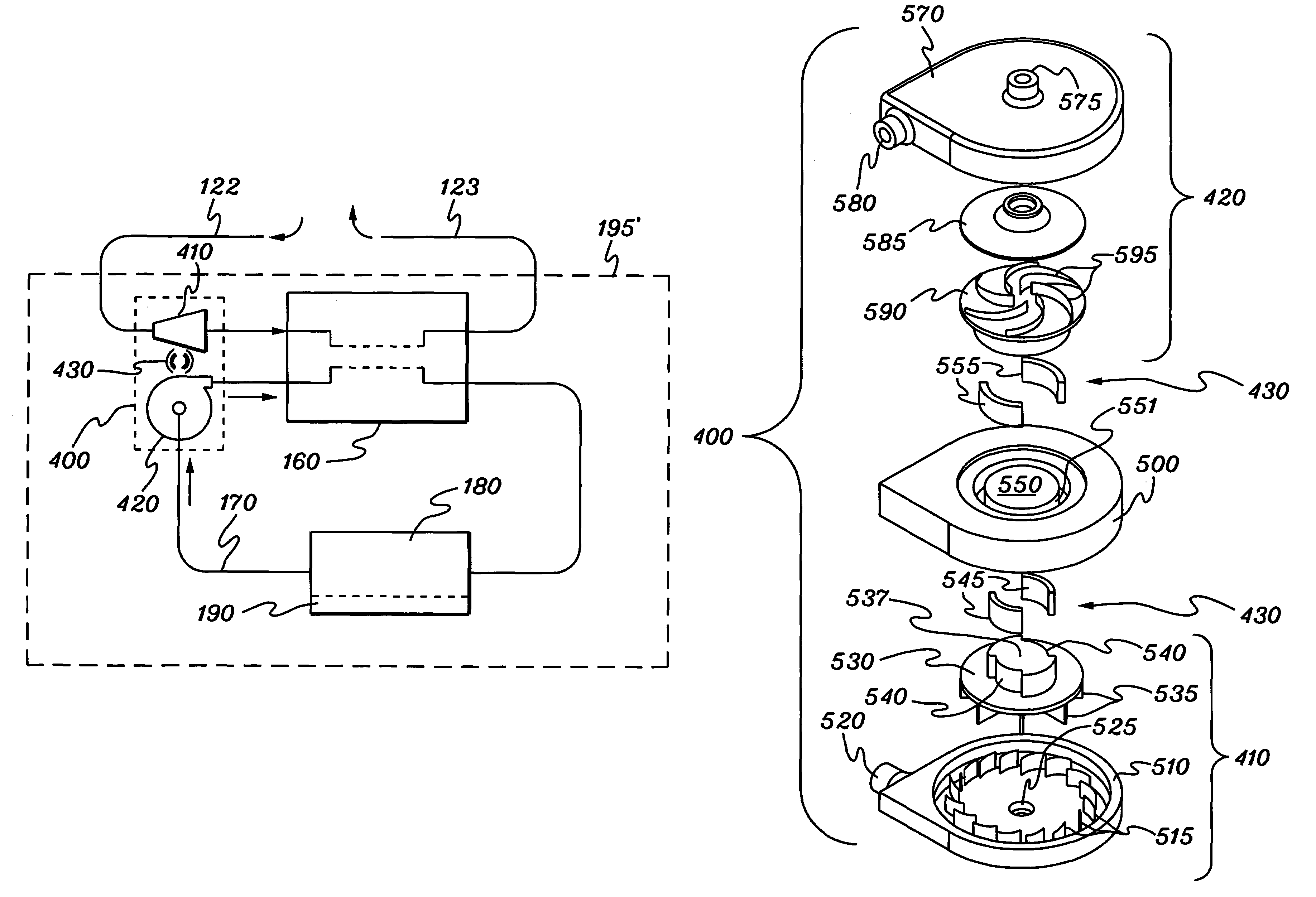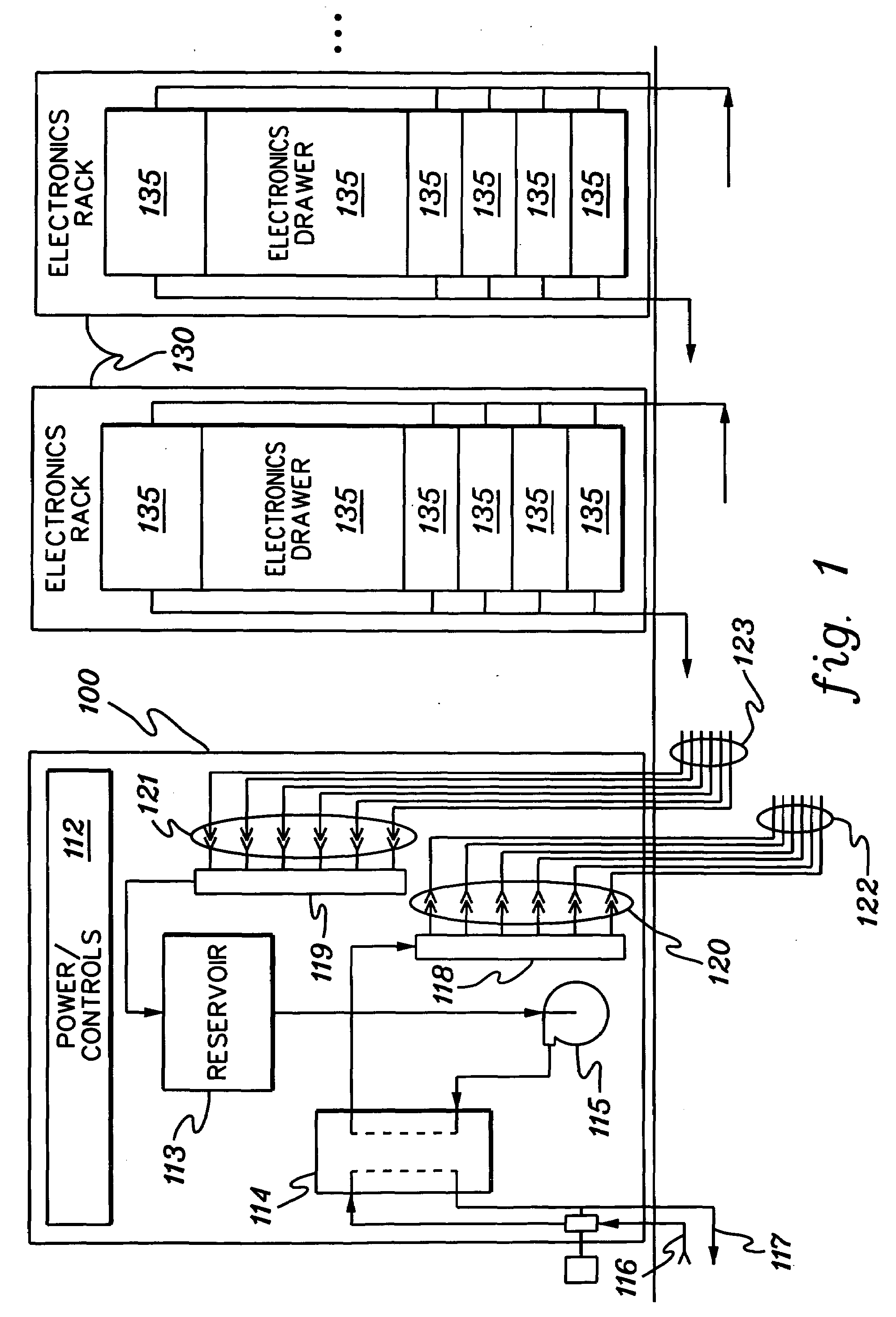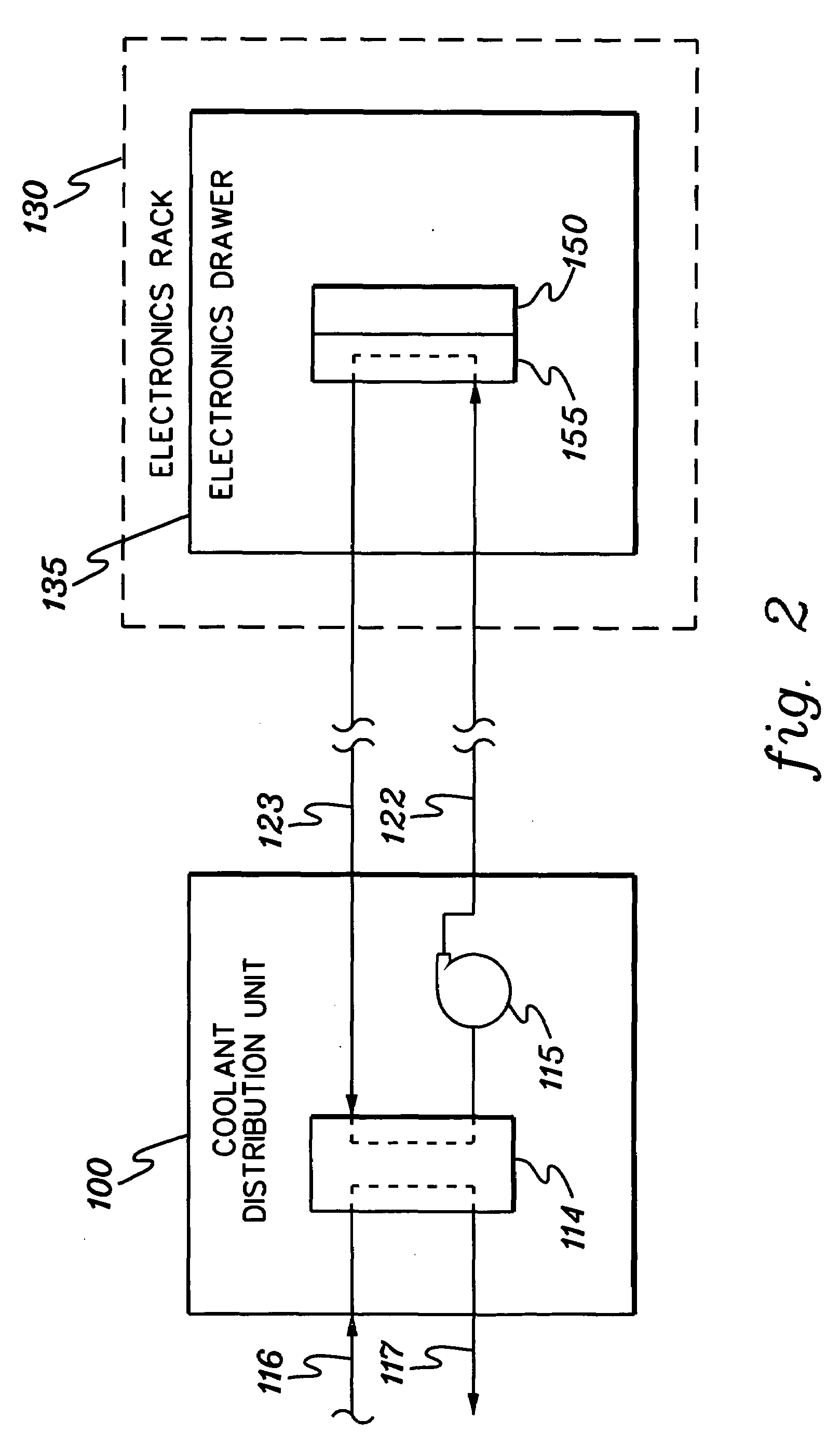Cooling apparatus for an electronics subsystem employing a coolant flow drive apparatus between coolant flow paths
a technology of coolant flow and cooling apparatus, which is applied in the direction of cooling/ventilation/heating modification, piston pumps, positive displacement liquid engines, etc., can solve the problems of increasing device temperature, thermal runaway conditions, increasing power dissipation, and therefore heat production, so as to facilitate heat removal and facilitate heat removal
- Summary
- Abstract
- Description
- Claims
- Application Information
AI Technical Summary
Benefits of technology
Problems solved by technology
Method used
Image
Examples
Embodiment Construction
[0027]As used herein, “electronics subsystem” comprises any housing, compartment, drawer, blade, etc., containing one or more heat generating components of a computer system or other electronics system requiring cooling. The term “electronics rack” includes any frame, rack, blade server system, etc., having a heat generating component of a computer system or electronics system, and may be, for example, a stand alone computer processor having high, mid or low end processing capability. In one embodiment, an electronics rack may comprise multiple electronics subsystems, each having one or more heat generating components requiring cooling. Each heat generating component may comprise an electronics device, an electronics module, an integrated circuit chip, etc. As used herein, “micro-scaled cooling structure” means a cooling structure with a characteristic dimension of 200 micrometers (microns) or less.
[0028]One example of coolant within a cooling system in accordance with an aspect of ...
PUM
 Login to View More
Login to View More Abstract
Description
Claims
Application Information
 Login to View More
Login to View More - R&D
- Intellectual Property
- Life Sciences
- Materials
- Tech Scout
- Unparalleled Data Quality
- Higher Quality Content
- 60% Fewer Hallucinations
Browse by: Latest US Patents, China's latest patents, Technical Efficacy Thesaurus, Application Domain, Technology Topic, Popular Technical Reports.
© 2025 PatSnap. All rights reserved.Legal|Privacy policy|Modern Slavery Act Transparency Statement|Sitemap|About US| Contact US: help@patsnap.com



